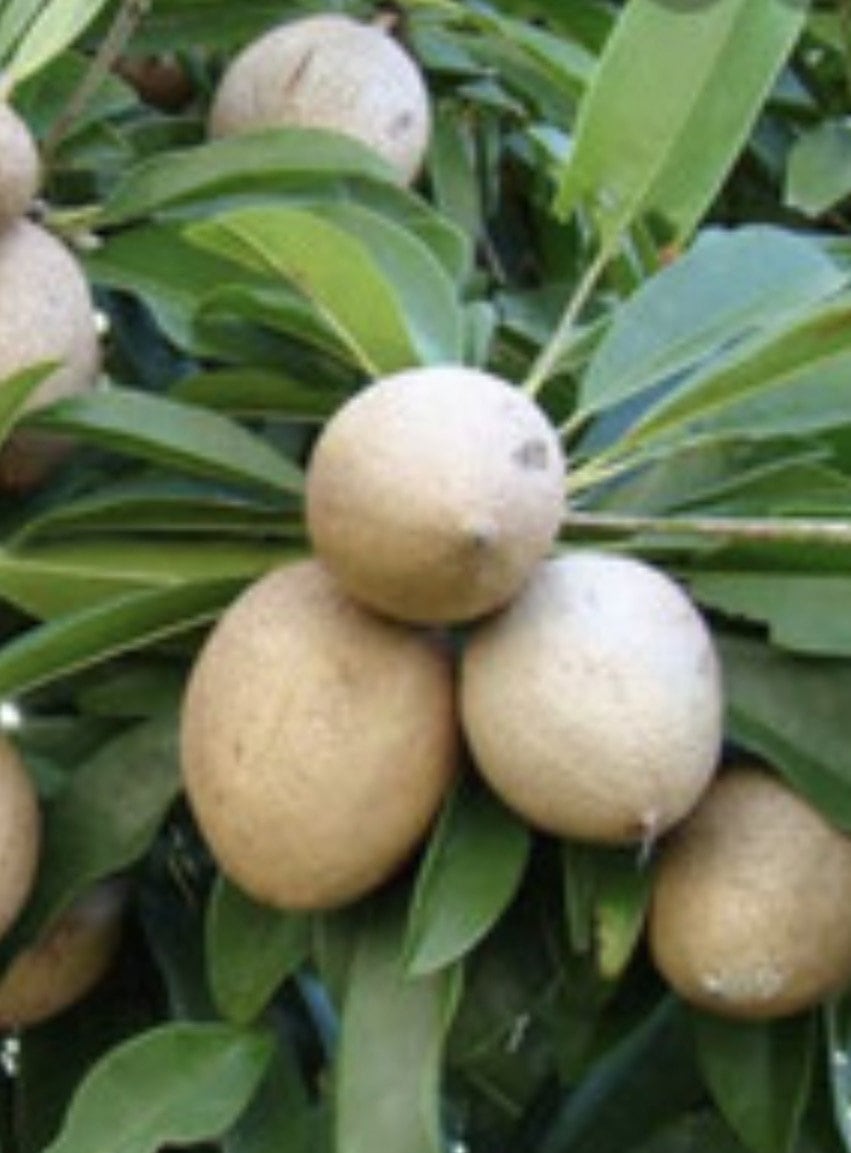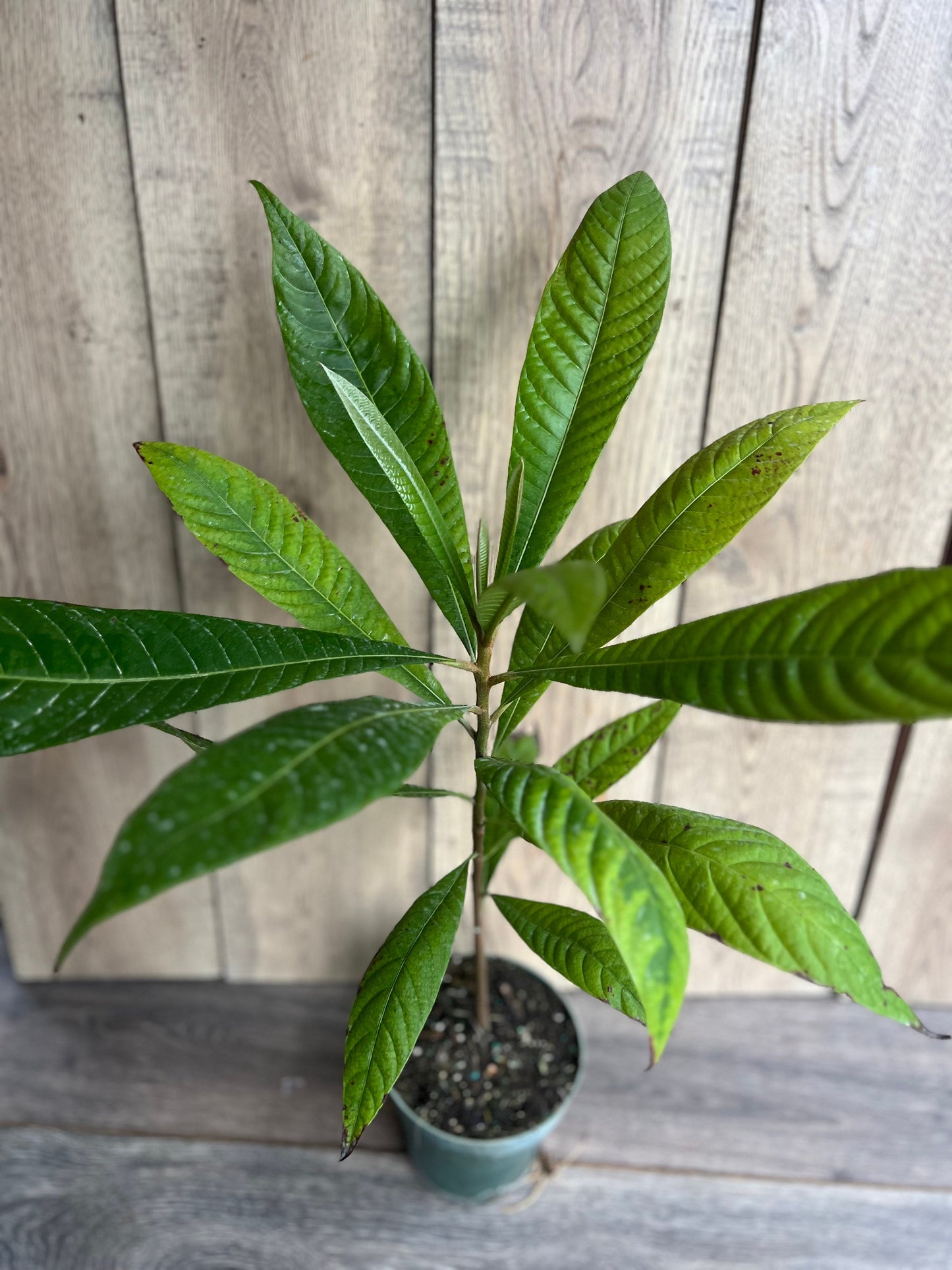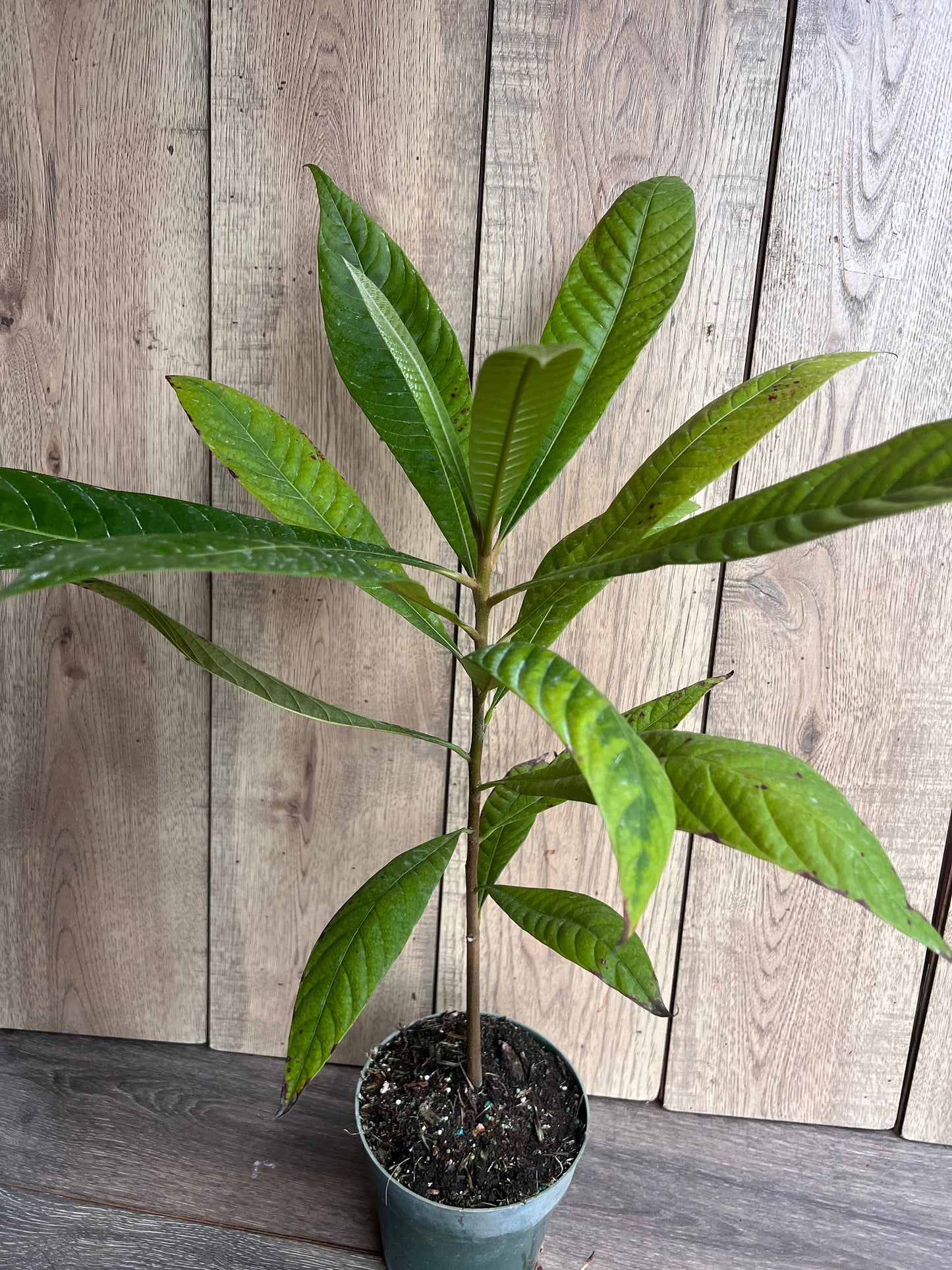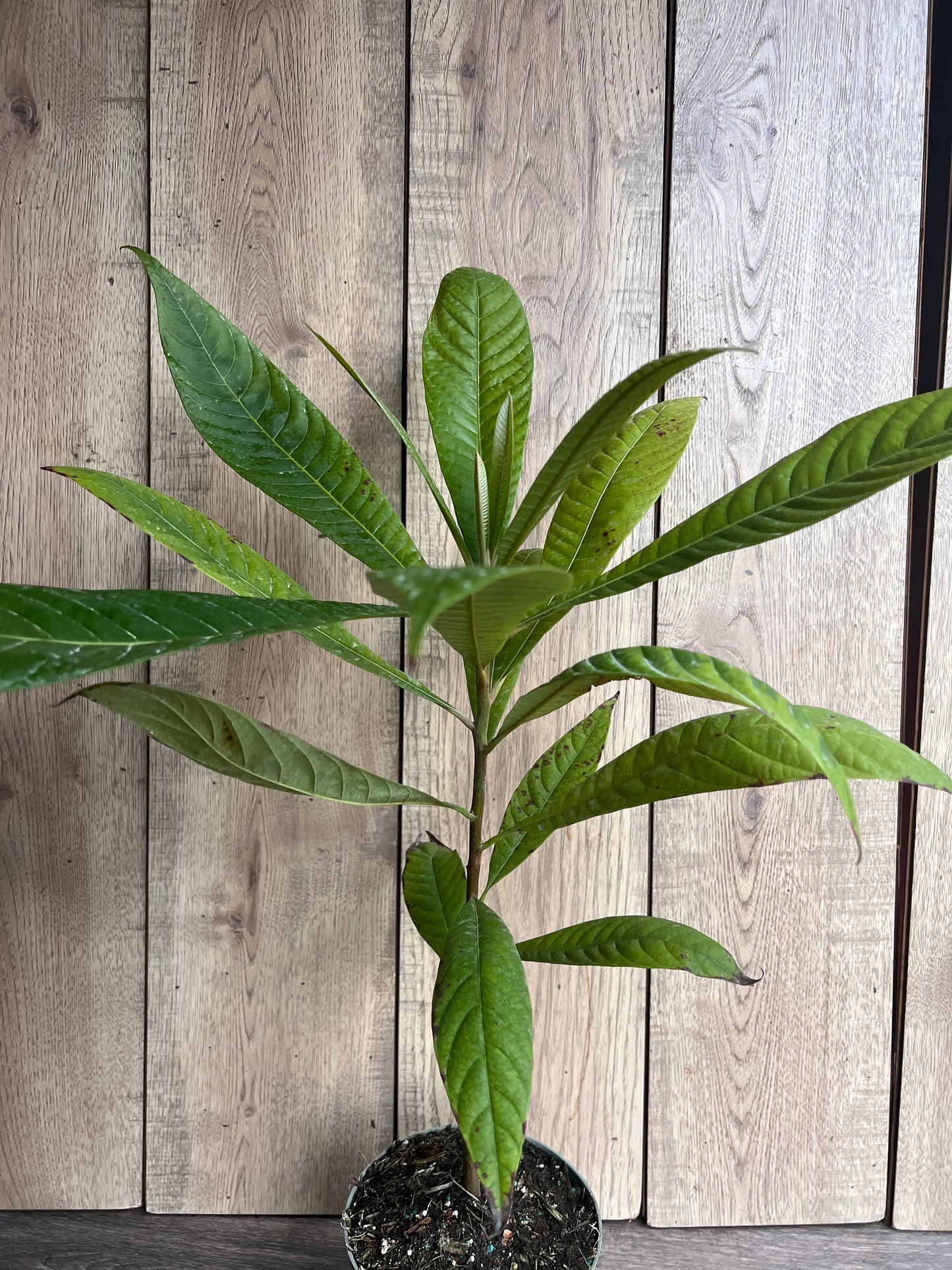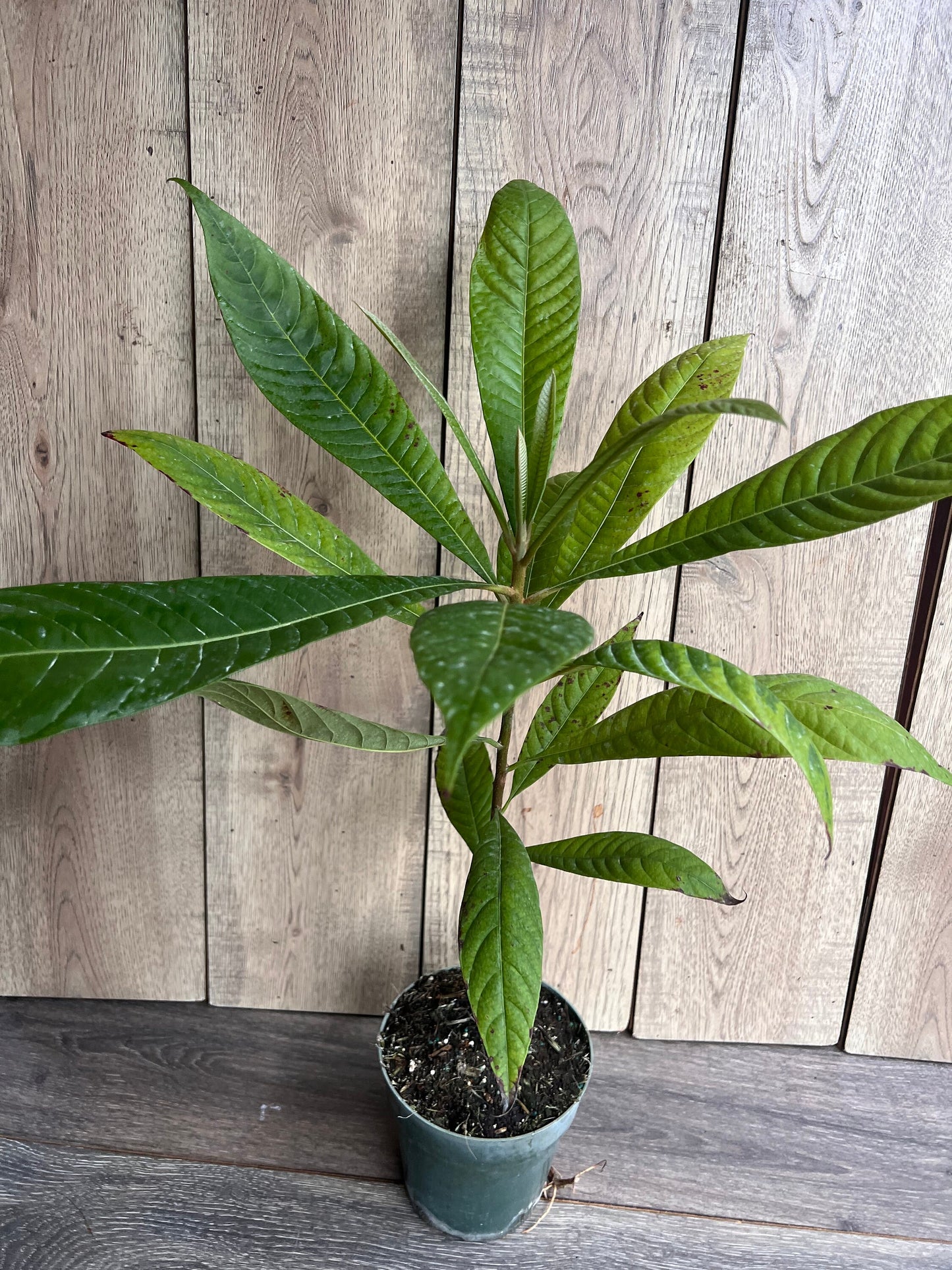Mamey sapote , Pouteria sapota, in half Gallon Pot
Mamey sapote , Pouteria sapota, in half Gallon Pot
Couldn't load pickup availability
Note: You will receive one Mamey tree in 1/2 Gal pot similar to the pictures
Mamey Sapote is a tropical fruit native to Central America and the Caribbean, known for its rich texture, sweet flavor, and vibrant appearance. The fruit has rough, reddish-brown skin and creamy, orange flesh that blends flavors of sweet potato, pumpkin, and almond with a hint of marzipan. It's highly nutritious, packed with vitamins A and C, potassium, and fiber, making it a popular choice for both its taste and health benefits. Mamey sapote is typically enjoyed fresh, but it's also used in smoothies, desserts, and ice creams. The tree thrives in warm, tropical climates, producing large fruit weighing 3-5 pounds once established, though it grows slowly.
Essential Care Tips for Mamey Sapote Trees
1. Climate and Temperature
- Warm, Tropical Climate: Mamey sapote trees require temperatures between 70°F and 90°F (21°C to 32°C). They are not frost-tolerant and should be planted in areas that don't experience freezing temperatures.
- Protection from Cold: In regions with occasional cold temperatures, consider using frost protection measures or growing the tree in a greenhouse.
2. Sunlight
- Full Sun: The tree needs at least 8 hours of direct sunlight daily for healthy growth and fruit production. Choose a location that provides plenty of sun throughout the day.
3. Soil Requirements
- Well-Draining, Fertile Soil: Mamey sapote trees thrive in loamy or sandy soil that is rich in organic matter. The soil should have a slightly acidic to neutral pH (6.0–7.5).
- Improving Soil: If the soil is heavy or clay-like, amend it with compost or perlite to improve drainage and prevent root rot.
4. Watering
- Consistent Moisture: Water the tree regularly, especially when young, keeping the soil moist but not waterlogged.
- Avoid Overwatering: Ensure proper drainage, as the tree doesn't tolerate standing water around its roots. Allow the top inch of soil to dry out between waterings.
- Drought Tolerant: Once established, Mamey sapote trees become more drought-tolerant but still perform better with consistent moisture during dry periods.
5. Fertilizing
- Balanced Fertilizer: Apply a balanced fertilizer (e.g., 10-10-10) or one formulated for fruit trees every 6-8 weeks during the growing season (spring and summer).
- Organic Amendments: Add organic compost around the base of the tree annually to enrich the soil and provide slow-release nutrients.
- Avoid Over-Fertilizing: Excess nitrogen can promote excessive leaf growth at the expense of fruit production.
6. Pruning
- Minimal Pruning: Mamey sapote trees generally require minimal pruning. Focus on removing dead, damaged, or diseased branches to maintain the tree's health.
- Shaping and Airflow: Light pruning can help shape the tree and improve air circulation, which aids fruit production. Prune after fruiting to avoid interfering with next year’s crop.
7. Pollination
- Self-Pollinating: Mamey sapote trees do not need another tree for pollination, but having multiple trees nearby can improve fruit yield.
- Pollinators: The tree relies on bees and other insects for pollination. Ensure the tree is planted in an area that attracts these pollinators for better fruit production.
8. Fruit Care
- Fruit Development: Mamey sapote trees take 5-7 years to mature and begin bearing fruit. The fruit ripens in summer to fall, maturing over several months.
- Harvesting: Harvest the fruit when it turns brownish-orange and has a soft texture. The flesh should be creamy with a sweet, almond-like flavor. Handle carefully to avoid damaging the fruit or tree.
9. Pests and Diseases
- Pests: Mamey sapote trees may attract aphids, mealybugs, or scale insects. Regularly inspect the tree and treat infestations with neem oil or insecticidal soap.
- Fungal Diseases: Powdery mildew or anthracnose may affect the tree, especially in humid conditions. Ensure good airflow and avoid overhead watering to reduce fungal risk.
- Root Rot: Ensure proper drainage to prevent root rot, which can result from overwatering or poor drainage.
10. Container Growing
- Large Containers: If growing in a container, use a large pot with drainage holes. Select a well-draining potting mix suitable for fruit trees.
- Repotting: Repot the tree every 2-3 years to refresh the soil and provide more space for the roots as it matures.
Summary
Caring for a Mamey sapote tree requires full sun, well-draining soil, and consistent watering. It thrives in warm, tropical climates and benefits from regular fertilization during the growing season. Pruning is minimal, and while the tree is self-pollinating, having multiple trees nearby can increase fruit yield. With proper care, Mamey sapote trees produce large, delicious fruit that is nutrient-rich and perfect for fresh eating, smoothies, and desserts.
Share
